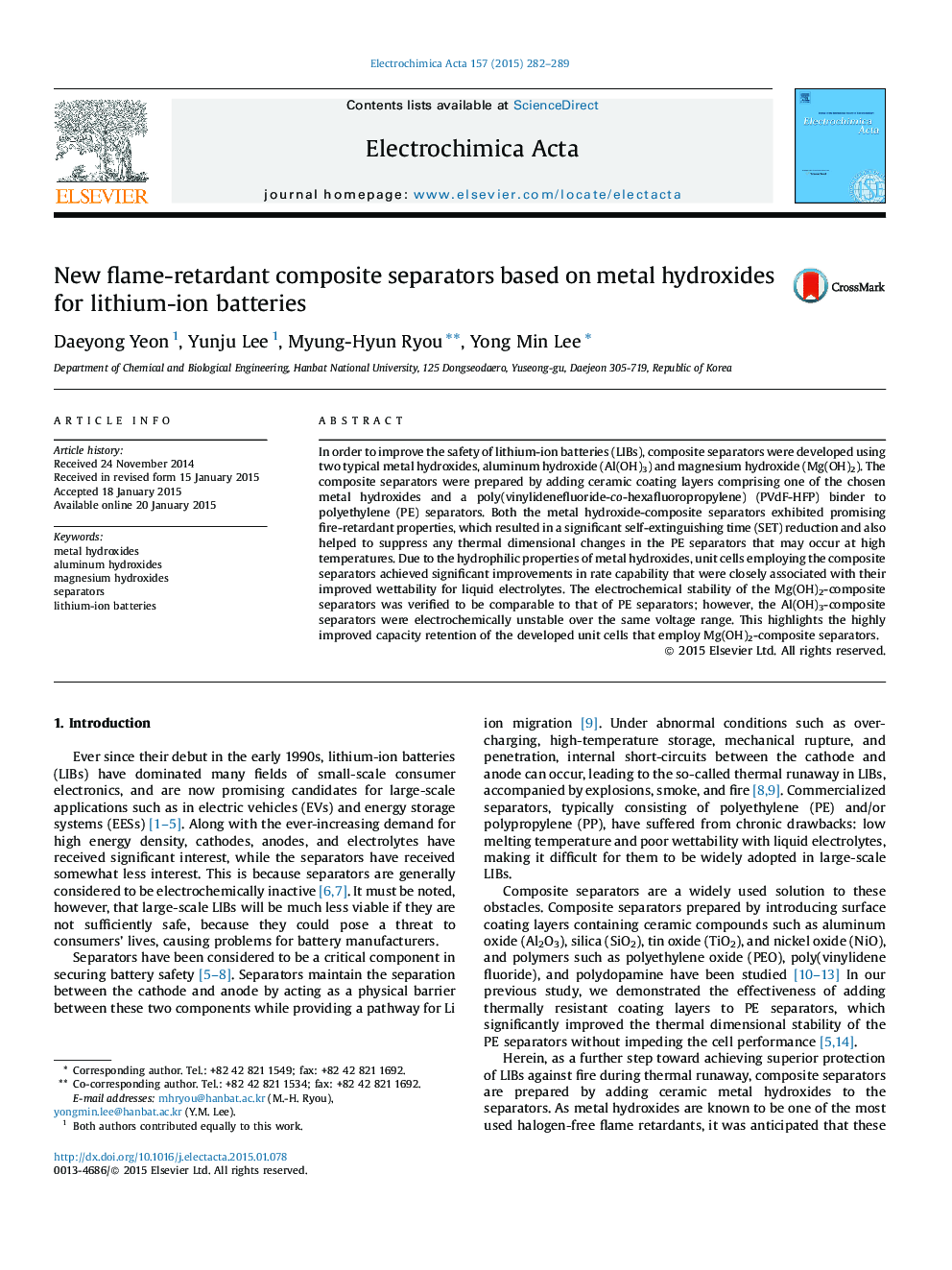| Article ID | Journal | Published Year | Pages | File Type |
|---|---|---|---|---|
| 184642 | Electrochimica Acta | 2015 | 8 Pages |
•Mg(OH)2-composite separators had superior flame-retardant properties.•Mg(OH)2-composite separators improved rate capability of unit cells.•Mg(OH)2-composite separators improved discharge capacity retention ability.
In order to improve the safety of lithium-ion batteries (LIBs), composite separators were developed using two typical metal hydroxides, aluminum hydroxide (Al(OH)3) and magnesium hydroxide (Mg(OH)2). The composite separators were prepared by adding ceramic coating layers comprising one of the chosen metal hydroxides and a poly(vinylidenefluoride-co-hexafluoropropylene) (PVdF-HFP) binder to polyethylene (PE) separators. Both the metal hydroxide-composite separators exhibited promising fire-retardant properties, which resulted in a significant self-extinguishing time (SET) reduction and also helped to suppress any thermal dimensional changes in the PE separators that may occur at high temperatures. Due to the hydrophilic properties of metal hydroxides, unit cells employing the composite separators achieved significant improvements in rate capability that were closely associated with their improved wettability for liquid electrolytes. The electrochemical stability of the Mg(OH)2-composite separators was verified to be comparable to that of PE separators; however, the Al(OH)3-composite separators were electrochemically unstable over the same voltage range. This highlights the highly improved capacity retention of the developed unit cells that employ Mg(OH)2-composite separators.
